Salix x sepulcralis ‘Chrysocoma’
Weeping willow
The tree tag number relates to the black tree-maintenance tags, usually fixed on the trunk, 2 to 3m above ground level.
Plants of the World Online (powo.science.kew.org) now lists it as Salix × pendulina nothof. tristis (Gaudin) I.V.Belyaeva
Two types of weeping willows are commonly seen in Ireland. Salix caprea ‘‘Pendula’, the weeping goat willow or ‘pussy willow’ is an unprepossessing tree of urban front gardens. Its branches are thick and stiff and the tree seldom attains an elegant shape. In contrast, the weeping Babylon willow is a superbly elegant tree, although eventually becoming too large for a small garden. The species Salix babylonica is not reliably hardy, but a cross between it and Salix alba is much hardier. It is this cross that is widely grown in Ireland. It is now known as Salix x sepulcralis, although you will find many other names in popular tree books.
The weeping willows growing in Belfast Botanic Gardens are the variety ‘Chrysocoma’ a form with bright yellow twigs in early spring. The golden weeping willow was introduced to the UK around 1908 perhaps from Germany. The Babylon willow has nothing to do with Babylon – it is a native of China.
Popular tree books and even more so the World Wide Web, are full of confusion concerning willows and this one in particular. Willows, like hazel and alders, have catkins. Catkins are a normal feature of trees that are wind pollinated yet willows are described as insect pollinated. This is based on the fact that the individual flowers in the catkins produce nectar – which would clearly be of no value to a wind-pollinated tree. The truth is probably more complex. A study of Japanese willows suggested that, in fine weather, wind pollination is more important for seed production whereas in a wet and cloudy spring high seed set depends more on insect pollination.
Willows are normally dioecious – that is they have male and female catkins on different trees. The weeping willow is described as an infertile male clone. However, as you can easily see on the trees in the Botanic Gardens, the weeping willow produces both male and female catkins on the same tree. Whether or not the clone is infertile, as are many interspecific hybrids, seems unclear. An Australian government website describes the weeping willow as sometimes producing seed and therefore poses a potential threat to wild habitats. So it seems that under certain circumstances this hybrid may produce viable seeds
As the photographs below show, the differences between the male and female catkins are quite distinctive.
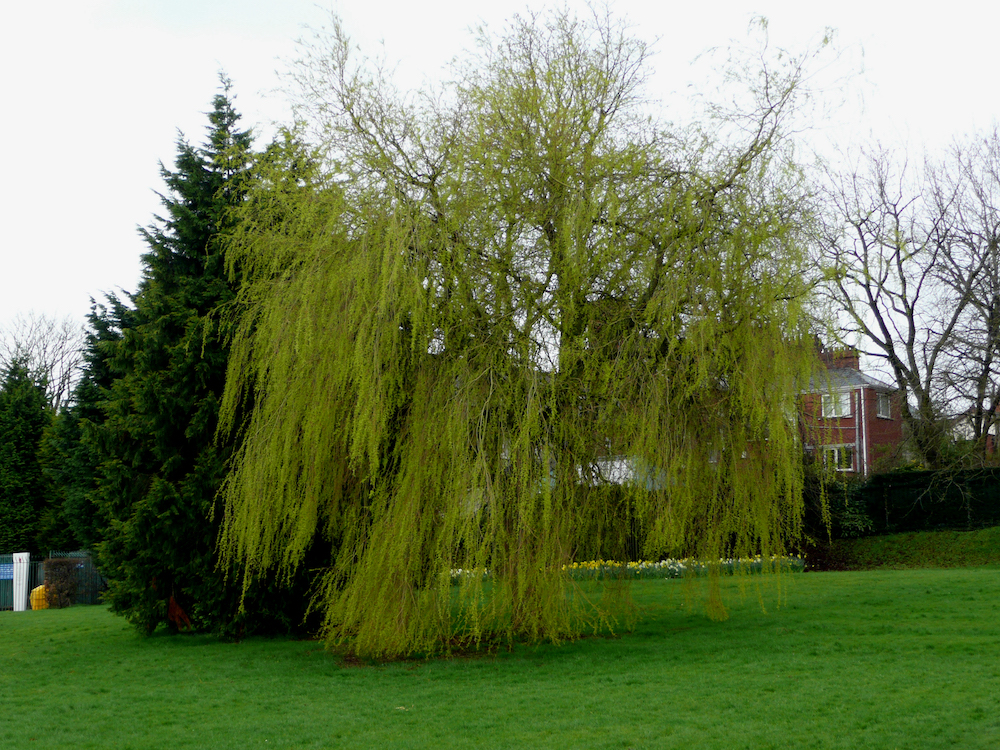
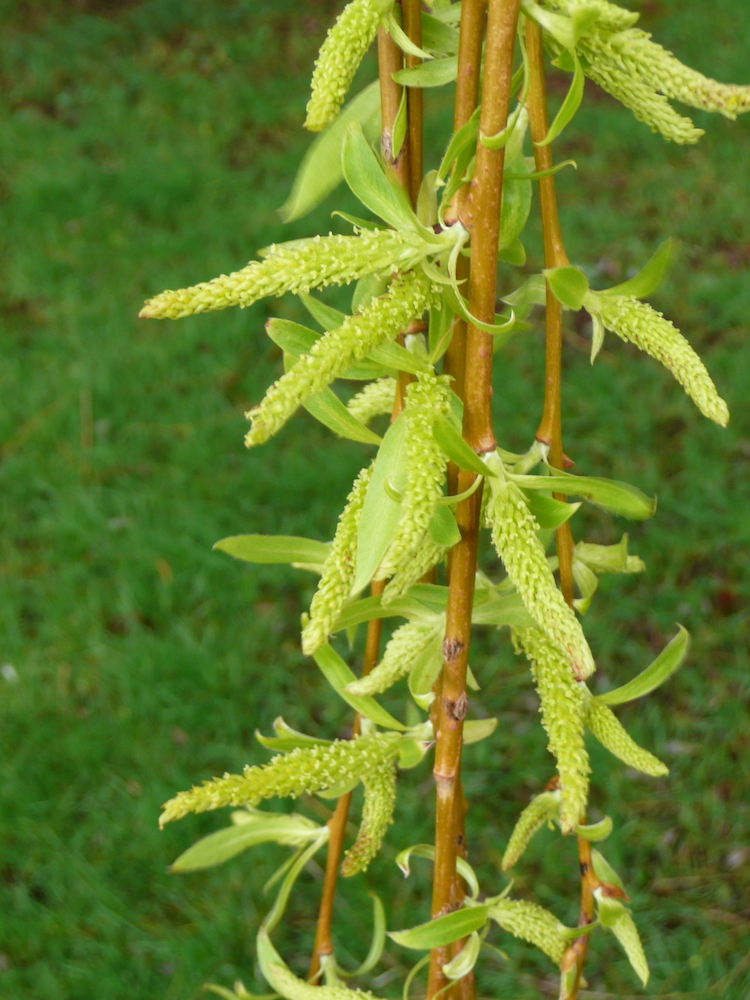
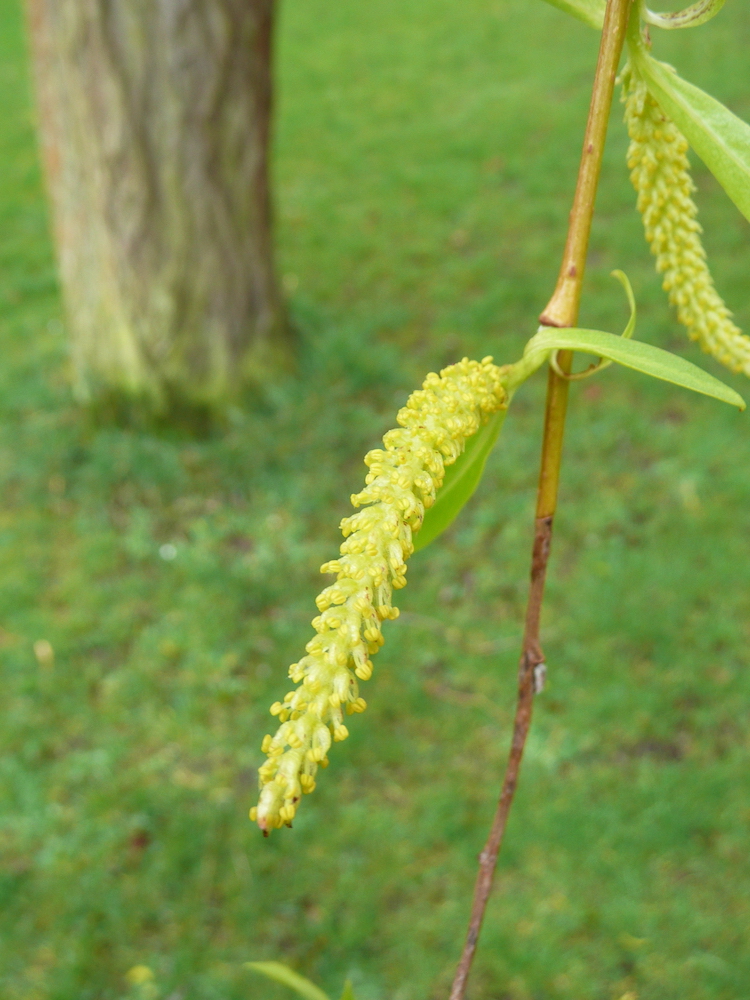


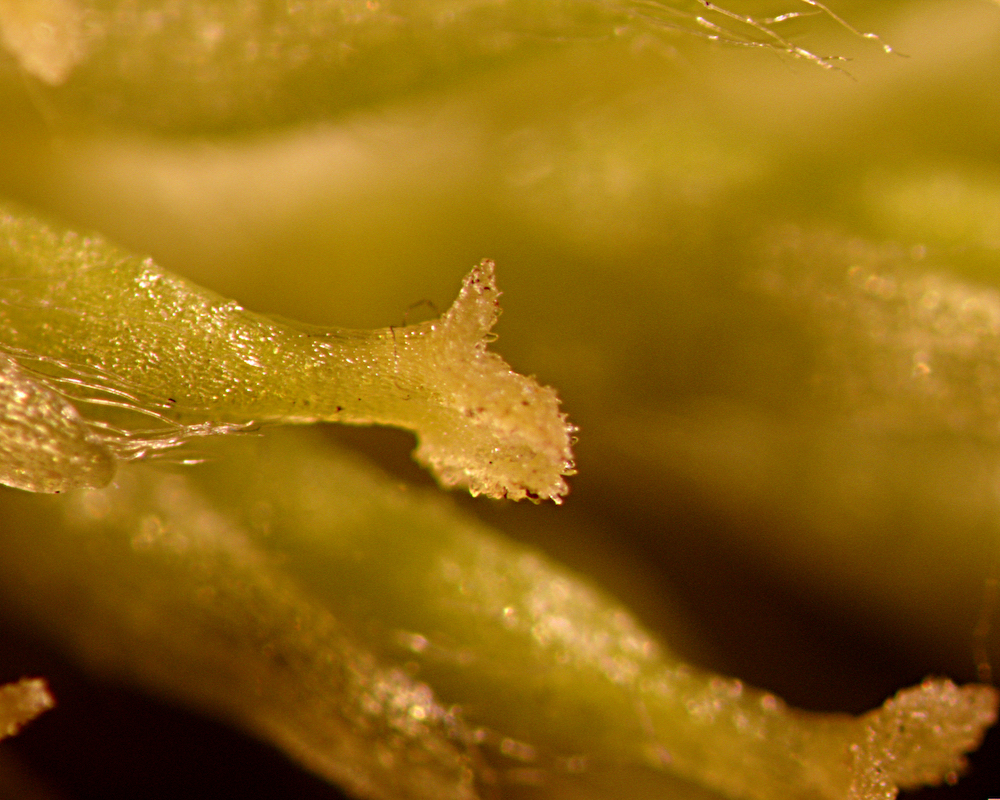
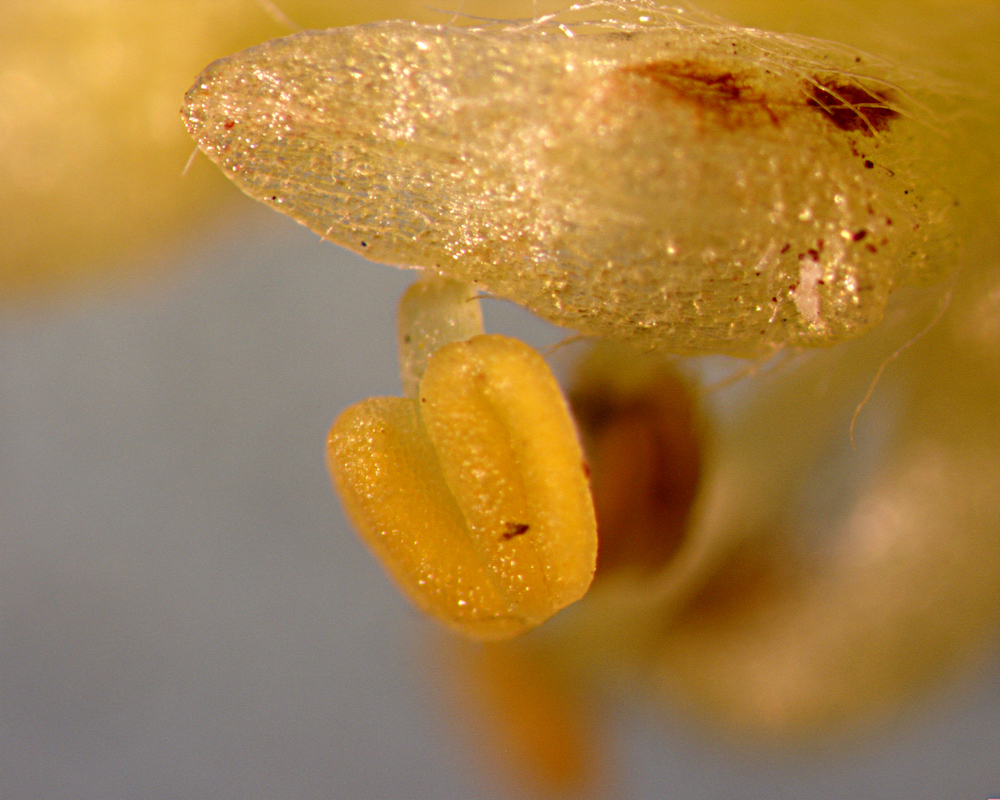
Photos taken in Belfast Botanic Gardens in 2009. Copyright: Friends of Belfast Botanic Gardens.
